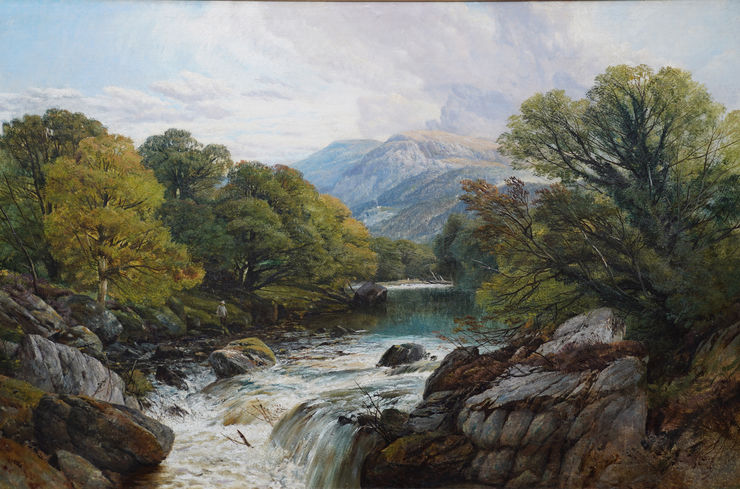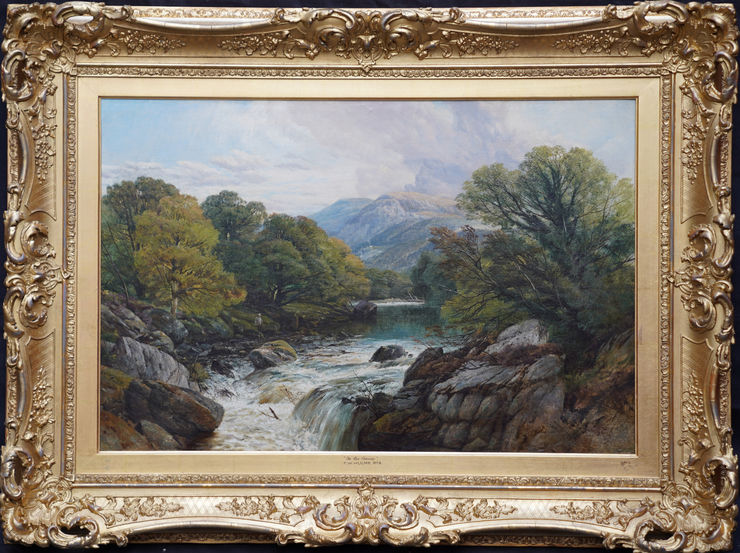Frederick William Hulme (1816-1884)
| Artist Name | Frederick William Hulme (1816-1884) |
|---|---|
| Title | Fishing on Conway River, Wales |
| Description | This stunning British Victorian oil painting is by noted landscape artist Frederick William Hulme. Painted in 1873, the location is the beautiful river Conway in north Wales. From its source to its discharge in Conwy Bay it is a little over 27 miles long. Hulme has perfectly captured the reflections on the more peaceful water in the middle ground and the surge, transparency and froth of the more tumultuous water in the foreground between lovely mossy boulders. The whole scene is illuminated in light, including the wonderful hills in the background and the vibrant trees lining the river. A lone fisherman is casting his rod from the bank. A really captivating painting and an excellent example of Hulme's work and of the Welsh landscape. On the Conway F W Hulme 1873 on slip. |
| Provenance | Somerset estate. |
| Medium | Oil on Canvas |
| Size | 30 x 20 inches |
| Frame | Housed in an ornate gilt frame, 40 inches by 30 inches and in good condition. |
| Condition | Good condition. |
| Biography | Frederick William Hulme (1816 - 1884) F.W. Hulme was born on 22nd October, 1816 in Swinton, Yorkshire. He was initially taught by his mother, who was a painter on porcelain, and by 1841 he had exhibited his first landscapes at the Birmingham Academy. During the first three decades of the 19th century British landscape painting was transformed from a fairly humble branch of art, based on topography, to one that was rich and vitally creative. England was changing from a rural society to an urban one and country life was viewed nostalgically as purer, healthier and more natural than life in the smoky new cities. Social prestige was associated with ownership of land and money and trade were seen as vulgar. The Victorian new rich hastened to buy themselves country estates and the large demand for landscape paintings produced a huge number of landscape artists. These pictures filled the new middleclass parlours and were the staple diet of the Royal Academy every year. Hulme moved to London in 1844 where he became an illustrator and engraver. However, he soon tired of this and began painting landscapes again. By 1852 the artist was living in Hereford Square and he began exhibiting his work at the Royal Academy and the British Institute. His paintings were mostly idyllic Welsh or Surrey views with animals, particularly sheep, and occasional rustic figures. His style is clear and fresh and his tranquil pastoral scenes fulfilled the Victorian ideal. By 1869 Hulme was living at 8 St. Alban's Road in Kensington from where he continued to exhibit at the Academy until 1884. Hulme lived in London until the end of his life. He died on 14th November, 1884. |
| Price | SOLD |

